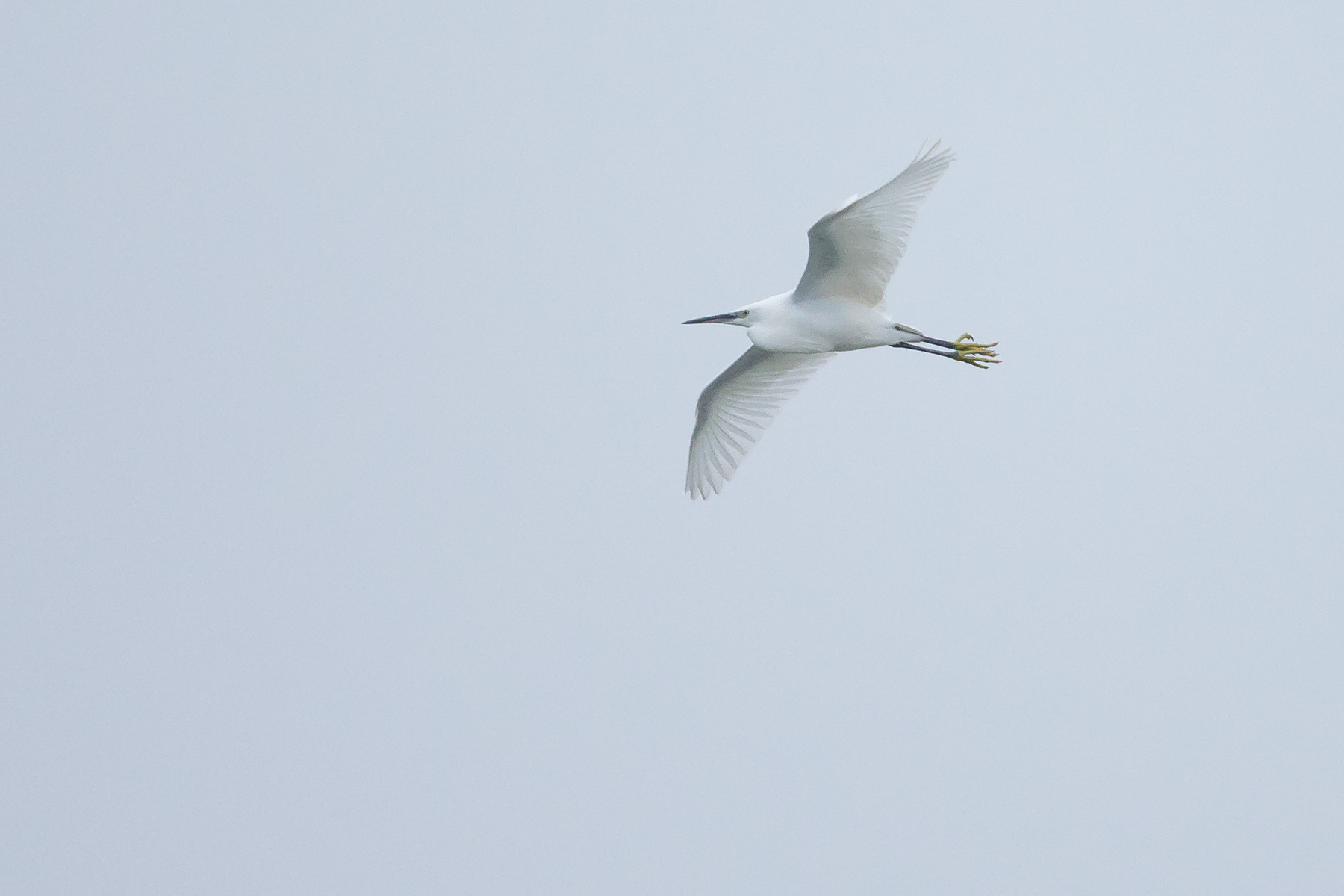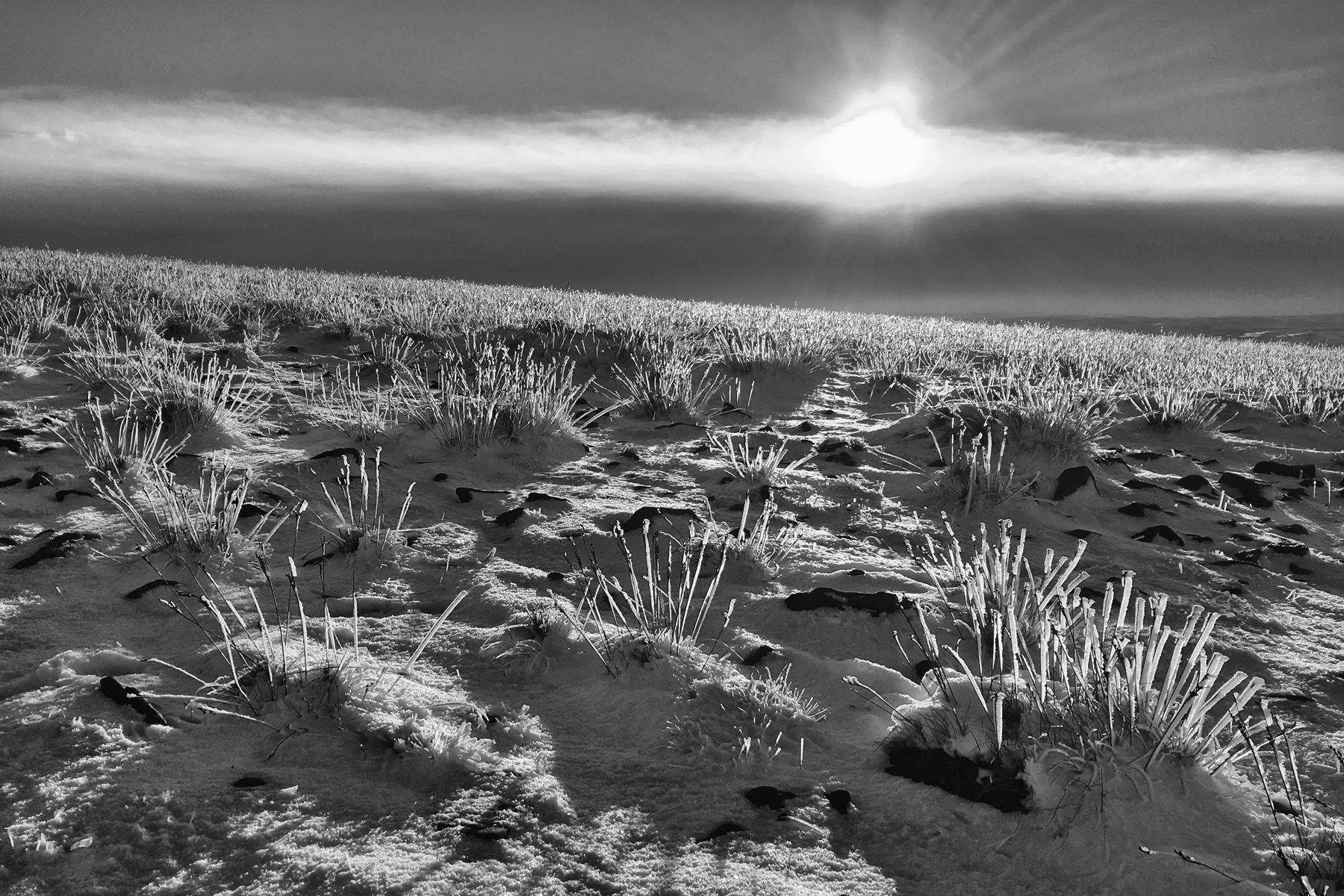A Snow Leopard makes its way down a cliff face in Hemis National Park, Ladakh
LOOKING BACK AT 2017 it was easy to pick my favourite wildlife encounter of the year this time. There were some very memorable moments starting with the Yellow-billed Loon in Lincolnshire, a bird I had wanted to see at point blank range for a long time, having missed the opportunity of seeing the previous Lincolnshire individual, which was only a few miles from this one then the Hayle Estuary long-stayer and a most painful dip of the Brixham harbour bird a couple of years ago. Colorado in April produced a few stunning highlights, including hiking up Guanella Pass in deep snow with Craig Robson for White-tailed Ptarmigan as well as early morning sunshine on Sage Grouse lekking only a few metres away from us plus some terrific all American diner breakfasts. Texas immediately afterwards was full of exciting action too, including the two near endemic breeding specials in the flowery Hill Country, Golden-cheeked Warbler and Black-capped Vireo, a proper spring fall out at High island as well as a stunning all day hike in the western mountains for the perky little Colima Warbler. Back in Bowland the sky dancing Pallid Harrier in Dunsop Valley in May will probably be the best bird I ever see locally, it was certainly my best Pallid Harrier of the very many I have seen so far! Thanks to Wayne Law for persuading me to have one more try at a close encounter. It even made up for missing dotterel in East Lancs for the first time in 12 years. Back-to-back tours in Iceland in June (I went round twice!) included close views of my WP lifer White-winged Scoter, a Snowy Owl found by chance in the midnight sun and a lovely overnight stay on the phalarope island of Flatey. The time spent photographing the gorgeous drake Harlequins shooting the rapids of the Laxá River was another outstanding experience.
Svalbard was rather tough this year in some really horrible weather but cruising the edge of the pack ice in SV Noorderlicht on one of the fine days with Ivory Gulls flying past was another great experience. There were also some great walrus landings, a pod of four Blue Whales around the boat and a very nice Polar Bear encounter with an animal raiding bird nests in the Måkeøyane, not to mention the best company! It was ironic that not long after returning home a juvenile Purple Sandpiper should turn up at Rishton, the first for the ELOC area. A very nice encounter with the Leighton Moss Purple Heron (one of four heron species seen from the Grisedale Hide that day!) with Mark Varley was another highlight. My travels ended with a Wild Images photo tour of Madagascar, where close encounters with Long-tailed Ground Roller in the Spiny Forest of the southwest, the Fosas of Kirindy, Indris in the eastern rainforest and the beautiful Golden-crowned Sifakas of Daraina were my favourite moments.
However, no matter how good all of these encounters were, there is one that stands above them in terms of its 'once-in-a-lifetime' nature, the Snow Leopard that we watched at its kill in Hemis National Park in Ladakh in March, in the most idyllic mountain ice and snow setting and with some of the best people I know... for three days! There were some other excellent moments in Ladakh like surprise finds of both Black-throated Accentor (10!) and White-winged Grosbeak as well as getting to the frozen salt lake of Tso Kar up on the Tibetan Plateau where Ground Tit and Blanford's Snowfinch were both much appreciated along with the many Kiangs and Argalis not to mention the staggering road journey along the Indus Gorge. Finally, although not nearly as spectacular, finding a drake eider at Stocks Reservoir (another ELOC mega) with my little boy Alexander (he had suggested we go to Stocks!) was also pretty special. I should also mention that most of these highlights were mostly thanks to the help of someone else, particularly local guides like Jigmet Dadul and his team in Ladakh, Arjen Drost, Menthe Groefsema and the rest of the crew of SV Noorderlicht, Armel Andriniaina in Madagascar, my colleagues at Birdquest and Wild Images, who do a great job of supporting me and keeping things going while I am swanning around on tour, and finally my tour participants who often make these encounters a lot more fun. I'm looking forward to another busy year in 2018!
Rows Left-right from top: Snow Leopard, Ibisbill, Sage Grouse, Yellow-billled Loon, Black-throated Accentor, Lucifer Sheartail, Colima Warbler, Golden-cheeked Warbler, Walrus, Harlequin, Pallid Harrier, White-winged Scoter, Polar Bear, Blue Whale, Golden-crowned Sifaka, Fosa, Long-tailed Ground Roller and Verreaux's Sifaka.





